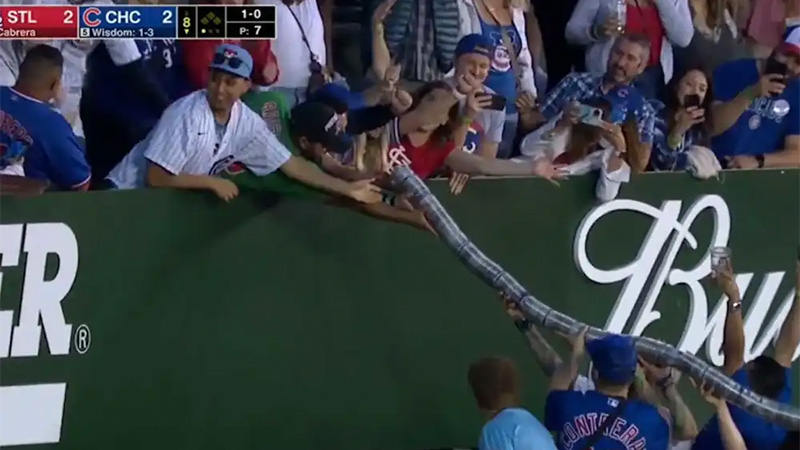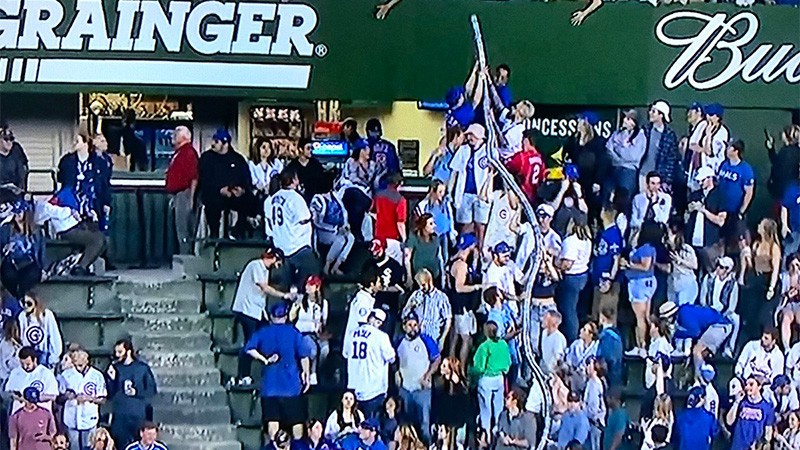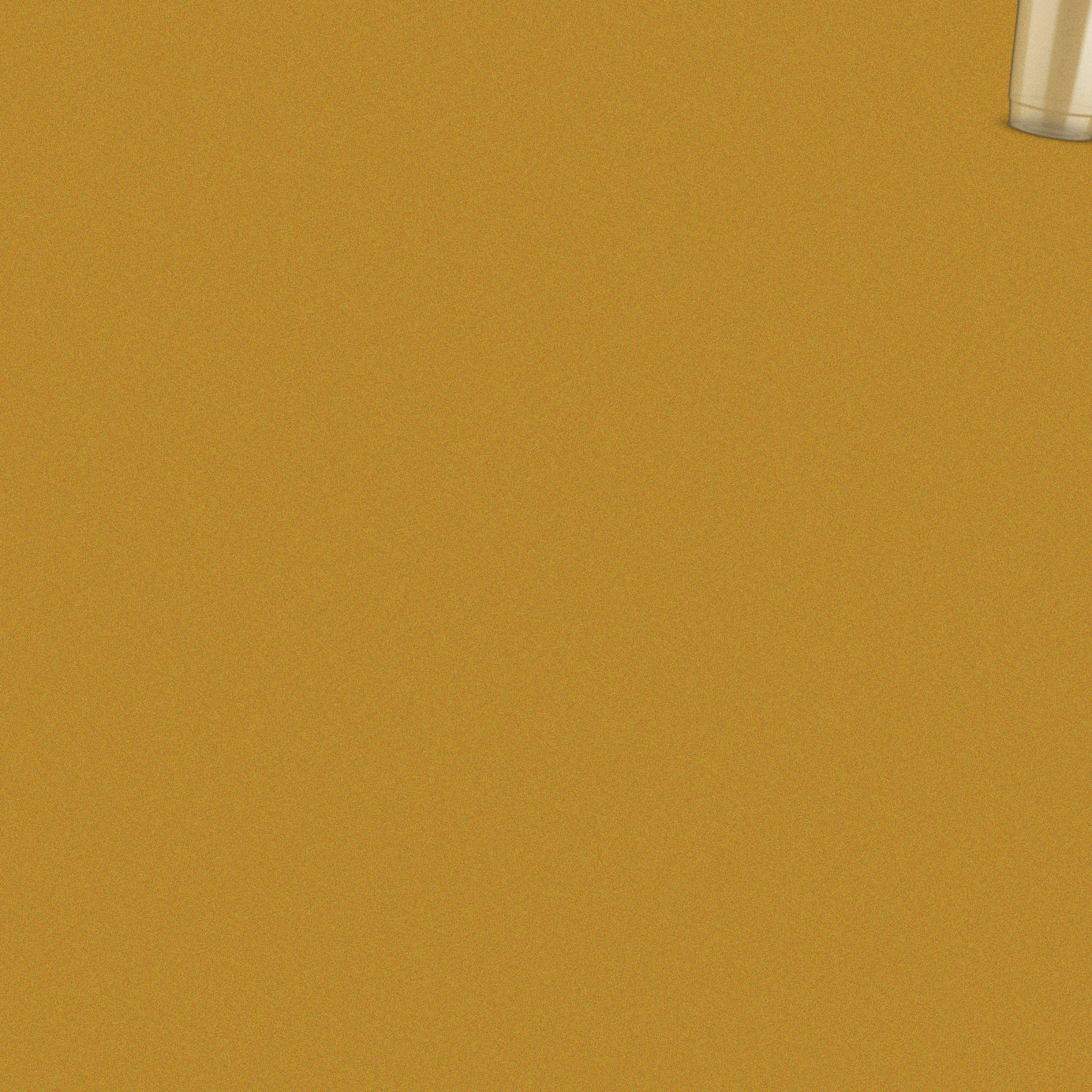Chicago Cubs pitcher Zach Davies had shut out the St. Louis Cardinals into the sixth inning on June 13, 2021, as the Cubs clung to a 2-0 lead in a bid to sweep the Red Birds in three games. Following a routine groundout, ESPN Sunday Night Baseball coverage suddenly cut away to another developing story: Fans in the bleacher seats were methodically building a cup snake out of their empties, which reached across a dozen or so rows. By the bottom of the eighth, the beer snake stretched almost 100 feet, from the top of the upper section of center field to the top of the lower center field section, amid fans’ goading chants.
“(That’s) some serious dedication,” marveled ESPN announcer Buster Olney. “Because as it’s being handled and they’re being stacked, you see this stream of beer coming out, spilling all over the people underneath it. So I think some fans have contributed a full or half beer.”
A Cubs-Cardinals showdown always makes for a raucous atmosphere at Wrigley, but this game marked another significant moment: the first sold-out game on the first weekend the ballpark returned to full capacity since the Covid-19 pandemic. (The Cubs won, by the way.) A few weeks later, fans of Triple A’s St. Paul Saints answered with a 102-foot cup snake — purportedly North America’s longest — cementing a trend that’s carried over to the 2022 season under the banner of tipsy camaraderie as we uneasily climb out of a pandemic.
Fans’ growing compulsion to see how tall a stack we can make from our empties (or half-fulls) speaks in part to our diminishing attention spans — a phenomenon made more glaring in the context of a baseball game’s standard, three-hour run time. Why not spend our time trying to get on the big screen — or, better yet, Barstool Sports — by working together on a crude arts and crafts project that wends through the stands like a booze-soaked game of snakes and ladders?
Half a Century of Fan Mischief
Such ballgame shenanigans are nothing new, however. The cup snake dates back to at least the 1960s, among fans seeking amusement during long breaks in play or blowout matches. Nor is it limited to America’s pastime. The supposed longest-ever cup snake — reaching just over 574 feet — was constructed during a two-hour rain delay in a 2013 Australia-Sri Lanka match at the Sydney Cricket Ground. Over the decades, beer snakes have popped up in baseball and cricket stands from Anaheim to Milwaukee, London, and Perth (and, more recently, at a DC Defenders XFL game in February 2020). But the Chicago baseball connection runs especially deep.
“While the origins of the beer cup snake are notoriously slippery to pin down, I think it’s safe to say that the act is most associated in popular memory with Chicago sports — particularly the bleachers at Wrigley Field and old Comiskey Park — going back at least half a century,” says Jacob Pomrenke, director of editorial content for the Phoenix-based Society of American Baseball Research.

In the 1970s, cup snakes became associated with a certain colorful broadcaster named Harry Caray, who developed a penchant for revving up the crowds when he started calling White Sox games at Comiskey.
“Caray was infamous for taking his microphone (and often removing his shirt) and calling White Sox games directly from the bleachers,” Pomrenke says. A 1972 clipping from the Chicago Tribune reads:
“There’s nothing like fun at the old ball game. Not with Harry Caray in the bleachers, assembling his rooters and coaching them like the director of the old Paulist choir. The choir gets noisier as the beer cup stack grows higher and begins to obstruct the view of the regular gang of guys and gals from [beloved Chicago Irish bar] Sully’s Saloon.”
Even within this playful recap, you can feel the irritation of the fans whose views of the action were getting blocked by a snaking stack of empties. The bespectacled Caray still occasionally called games from the bleachers when he moved to the North Side to call Cubs games in the ‘80s; naturally, the beer snakes followed.
“Bleacher Jeff” Gorski — a bearded fixture of Wrigley’s left field bleacher seats, North Side legend, and Cubs fan for all his 41 years of life — has a rule of thumb when it comes to cup-stack shenanigans.
“If the game is at all interesting, like within a grand slam or two, let’s watch the game,” Gorski says. “We pay the most expensive tickets in baseball, and I’d like to watch that baseball without people randomly screaming about forming towers of garbage and spit.”
Snaking Into the Meme Blog Era
Gorski, who attends between 50 and 70 home games a year, is no stranger to the bleacher seats’ party atmosphere, nor to enduring many a losing home-team record — both of which create fertile grounds for mischief.
“At a certain point, you have to allow for some shenanigans; I don’t want to be the fun police,” he says. “But it’s been ramped up significantly in the last few years. It was more fun when it was a rare thing.”
He can always see it coming. Around the third inning, someone gets up and starts calling out, “Gimme your cups!” and waving for people to pass them down. “They’ve got a baby snake they’re working on,” he says. “People are getting all celebratory and cheering for it, and it’s like a domino effect for people’s attention.”
It’s not exactly a cheap diversion, particularly if you’re donating half-full beers to the cause. (A beer at Wrigley costs around $12.) It’s also, well, gross; not just because you’re holding and getting showered with the backwashed remains of dozens of strangers’ beers, but also because we’re still, technically, in a pandemic.
Gorski blames social media, especially meme blogs like Barstool Sports, for giving so much oxygen to cup snakes, to the point where it’s become the sole reason for some fans to attend a game. It builds the wrong kind of community at the ballpark, he says. “It’s just about getting drunk and making it about themselves instead of the players and the game.”
But baseball has been on a steady attendance decline for years, prompting the league to enact a series of steps to speed up the game this September, like deploying pitch clocks, limits on defensive shifts, and larger bases. What are generations of shortened attention spans expected to do for almost three hours?
In a recent interview on WGN radio, Chicagoan Mike Mroz, who attended the June 13, 2021 game with daughter Lauren, told host Anna Davrantes that cup snakes contribute to the “energy, excitement, and fun” people have in the stands. (Mike Mroz was immortalized as an 11-year-old in a 1969 Chicago Sun-Times clipping documenting one of the earliest cup snakes at Wrigley Field, which Lauren shared last summer on Twitter.) Lauren went a step further to say the beer snake can quell animosity among fans.

“Cubs and Cardinals fans were bonding over it in center field,” she said, adding that fans are going to drink anyway. At least this gives them something to do. “I’d rather have a cup snake than a fight any day.”
Unfortunately, the two do occasionally coincide. A cup snake might have been the catalyst for a bleachers fight in August that sent a Cubs fan tumbling down a few flights of stairs, per Gorski’s conversations with Wrigley Field security. Pomrenke also cites numerous references of rowdy fan behavior in the bleachers when the Braves played from 1953 to 1965 in Milwaukee, noting it’s “highly likely” a cup snake was involved.
For his part, Gorski maintains that fans should save the camaraderie for the game rather than a flimsy excuse for stacking garbage just to attract attention. He is making his cause known on his platforms, social media and otherwise. His rock band, Bleacher Bum Band, has a track on its 2021 album called “Cup Snake Guy.”
“He’s a cup snaaa-aaake guy, chases Jagermeister with a Mai Tai,” sings lead singer Danny Rockett. “And the best part of the game was stackin’ cups up in the ninth.”
Gorski recently took up a similar crusade against the wave — which he argues detracts from pitchers’ attention — by often donning a “No Wave at Wrigley” T-shirt at games, part of a longstanding “no wave” tradition at the Friendly Confines. It’s been working, he says; it’s all in a bid to keep us fans to task, doing our part to keep this aging game alive and well — even if it means our only 15 seconds of fame come when we appear on the Jumbotron.
“At the end of the day, we’re here to give support and energy in a positive way,” he says. “I’m just going to keep chipping away at it. Hopefully one day the fever will break.”
